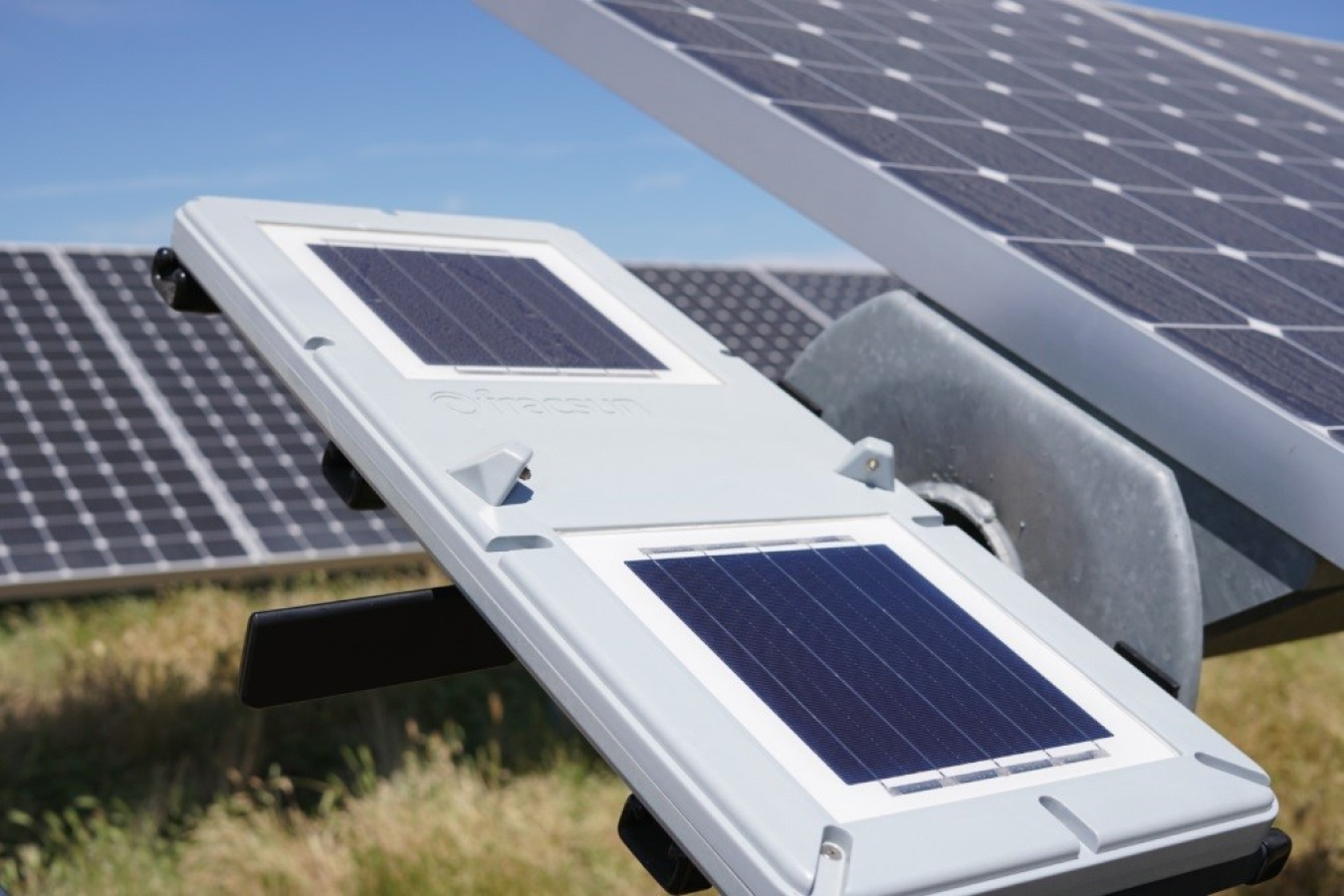In 2017, a company called Fracsun received $150,000 in Small Business Innovation Research (SBIR) funding for its idea for solar cleaning.
September 28, 2020
A Fracsun ARES soiling measurement device, comprised of two solar cells, is attached to the mounting racks of photovoltaic panels. Photo courtesy of Fracsun.
The accumulation of dirt on solar panels, known as soiling, blocks sunlight from reaching the panels and can significantly decrease their energy output. However, cleaning these panels is expensive, and predicting when to clean based on the actual soiling rate—which changes constantly based on local conditions—has been a longstanding challenge for the solar industry.
In 2017, a company called Fracsun received $150,000 in Small Business Innovation Research (SBIR) funding for its idea for a device that could tackle this problem. With this funding, and a follow-up award of $1 million in 2018, the company successfully progressed through proofs of concept, multiple prototypes, testing, validation, and manufacturing of the device. Now, 100 of Fracsun’s devices have been installed at 52 sites across 12 U.S. states and five other countries, with orders for 90 more to be installed by the end of 2020.
Fracsun’s Automatic Reference for Empirical Soiling (ARES) device consists of two small photovoltaic (PV) reference cells installed alongside a regular PV panel in a solar array. One of the reference cells gets dirty at the same rate as the panels in the array, while the other is cleaned daily by small nozzles built into the device. Then, Fracsun’s software compares the energy output of the dirty and clean reference cells to see how quickly the panels are soiling and how that is affecting their energy production. The software then uses this data to calculate the optimal cleaning schedule to balance losses in energy production with cleaning costs.
While maximizing energy output is important to PV plant operators, cleaning solar panels can be a large portion of a plant’s operating costs. Cleaning a PV array costs about $2 per kilowatt per year, so a 5-megawatt system can cost $10,000 per year to clean. This means the money spent washing panels often outweighs the profit gained by cleaning the panels. Fracsun estimates that, for the 1.121 gigawatts of PV capacity currently monitored by the ARES devices, plant operators have saved more than $5 million by optimizing cleaning schedules.
Fracsun’s plug-and-play device can be installed in 15 minutes, as shown in the time lapse video below. It attaches to the existing framework of PV arrays and is powered entirely by the two reference cells. The device can then securely transmit the data it collects to Fracsun’s web portal for analysis.
A time lapse of a crew installing Fracsun’s ARES device, which measures soiling losses in photovoltaic plants. Video courtesy of Fracsun, LLC.
In addition to saving money for PV plant operators, Fracsun’s ARES device gathers valuable data for researchers. Soiling is difficult to predict because it’s caused by a variety of factors, including dust, wind, rain, pollen, and bird droppings. Researchers are creating and refining computational models to predict and understand soiling rates across the country. Incorporating more real-world data into these models is the best way to improve their accuracy. Currently, Fracsun’s ARES devices collect data for a combined area of more than 65,000 square miles and have so far collected nearly 20,000 days’ worth of soiling data.
Fracsun is just one of nearly 100 companies who have received solar SBIR and Small Business Technology Transfer (STTR) funding since 2009. This program enables U.S.-based small businesses to pursue high-risk, innovative research and development of technologies with the potential for commercialization. Small businesses receive Phase I SBIR funding to pursue promising proofs-of-concept and, if successful, can receive follow-on Phase II funding to develop prototypes. In the Solar Energy Technologies Office, projects across a wide variety of solar energy topics such as photovoltaics, grid integration, solar plus energy storage, and community solar have received SBIR funding.
Learn more about the Solar Energy Technologies Office’s photovoltaics and manufacturing and competitiveness research.

